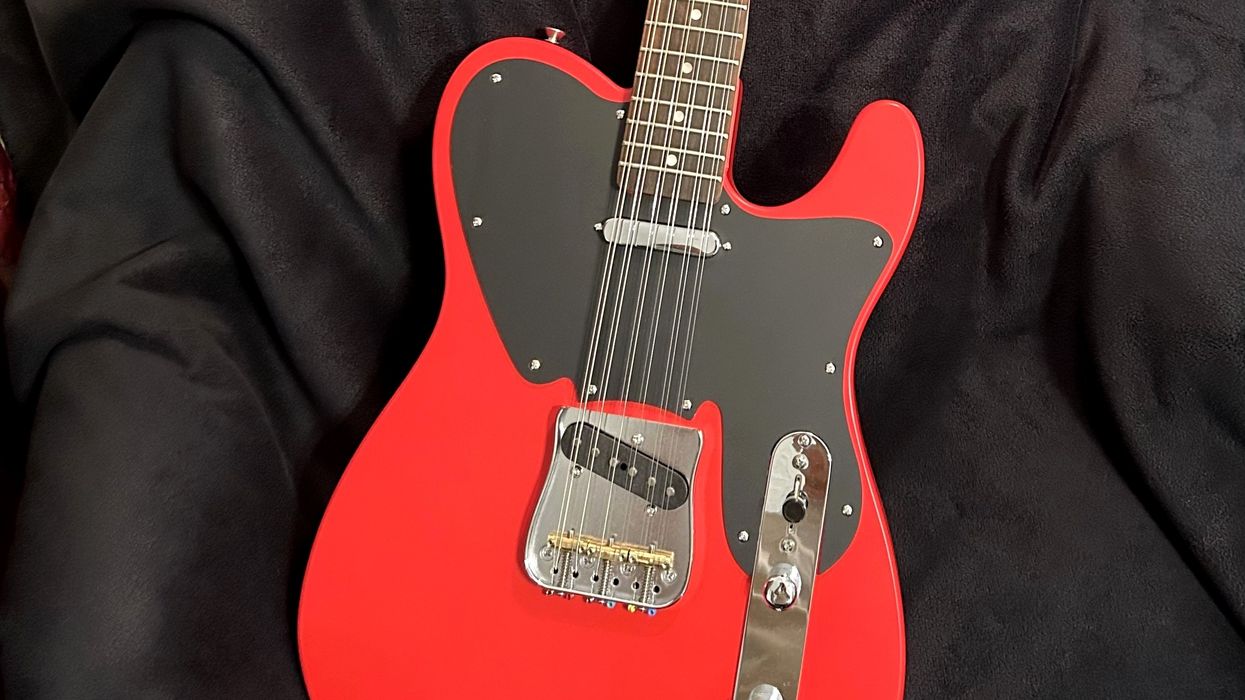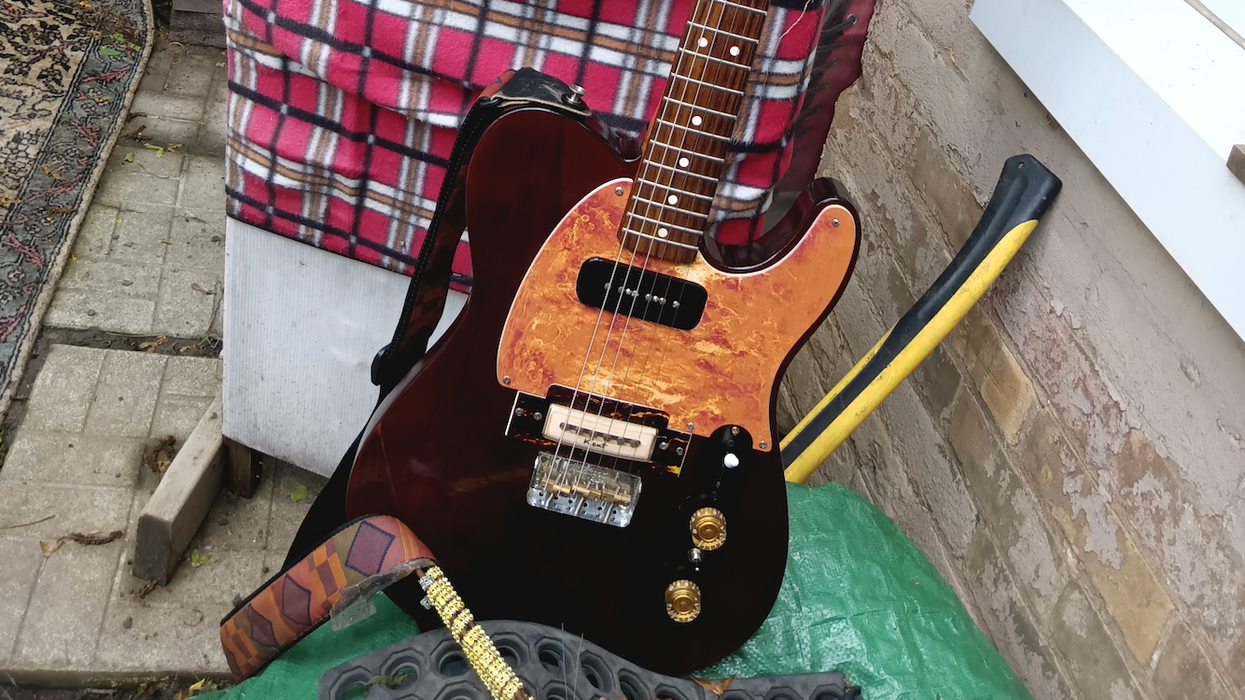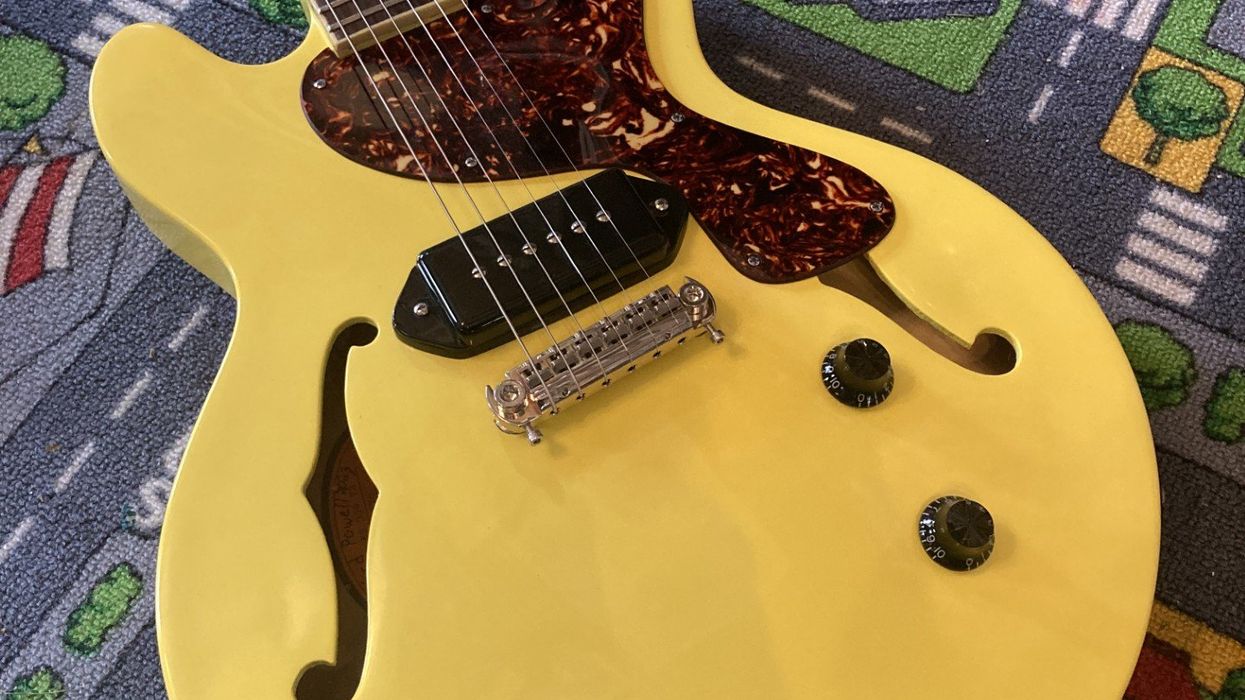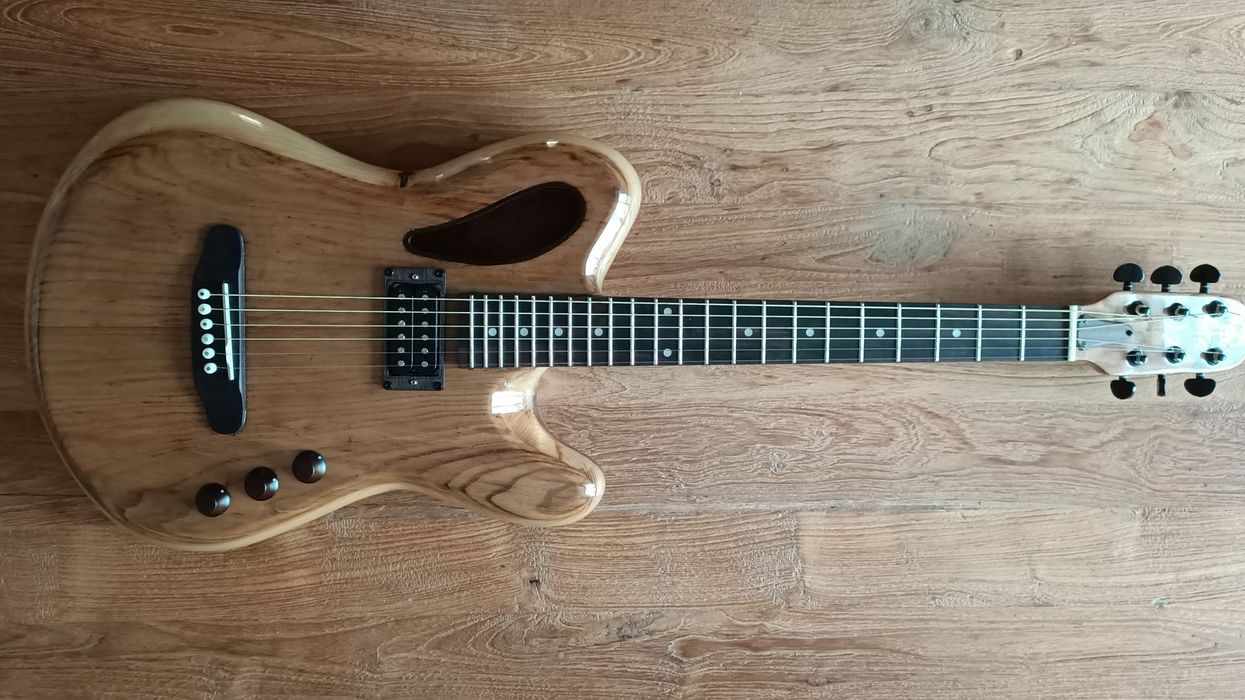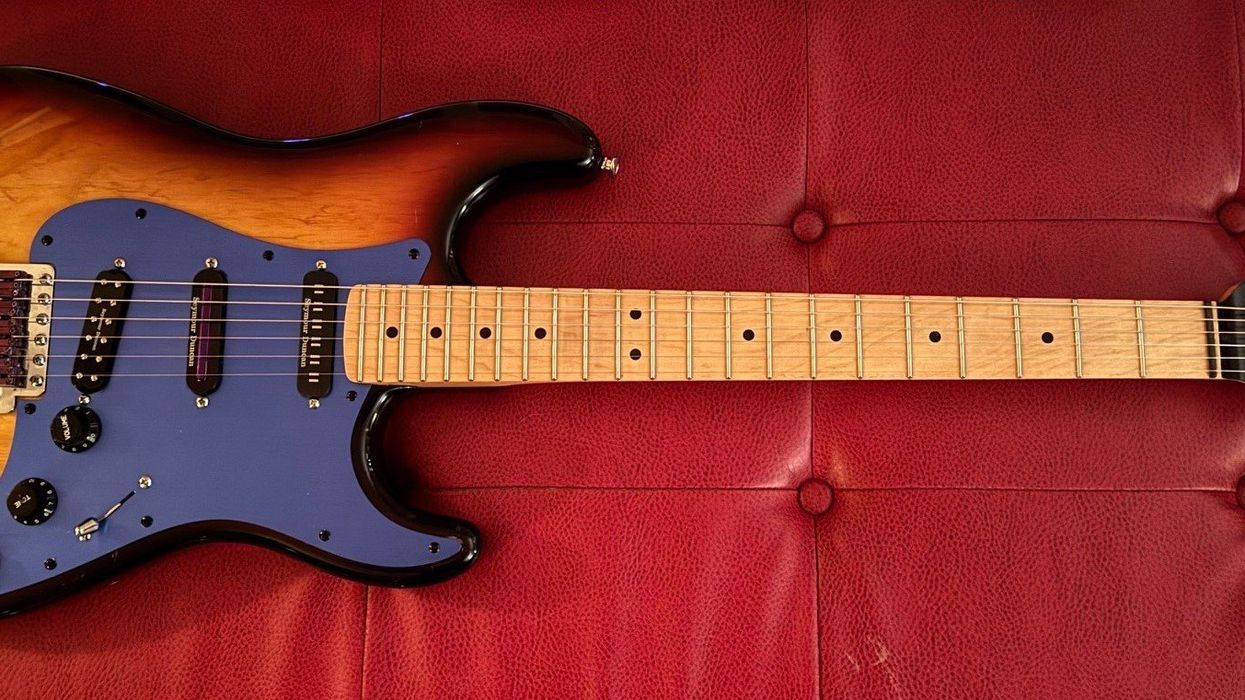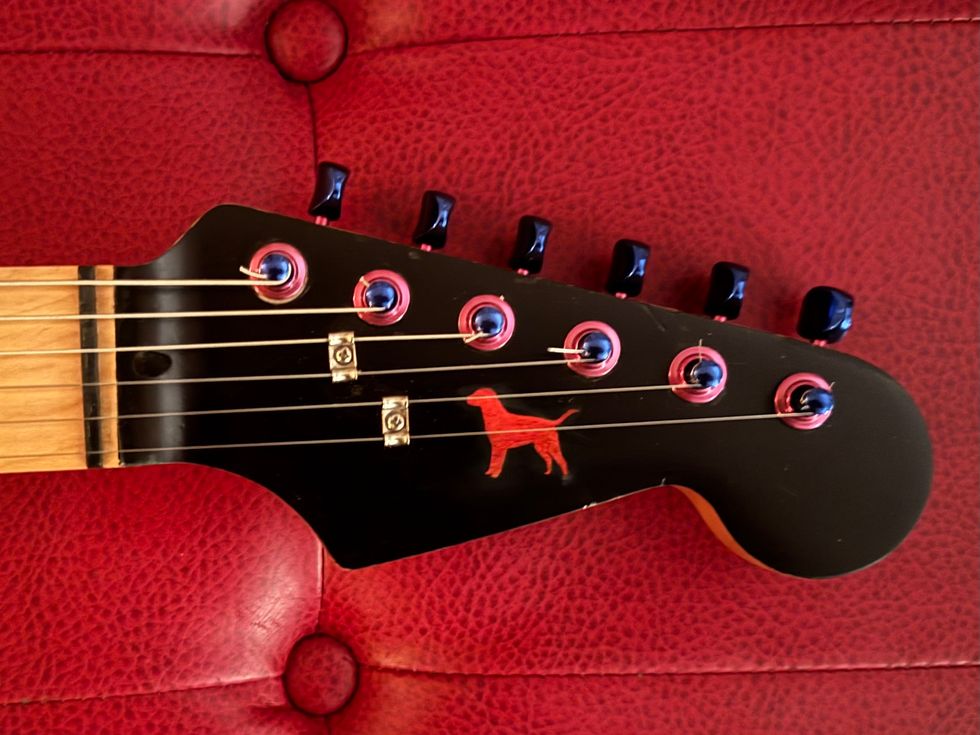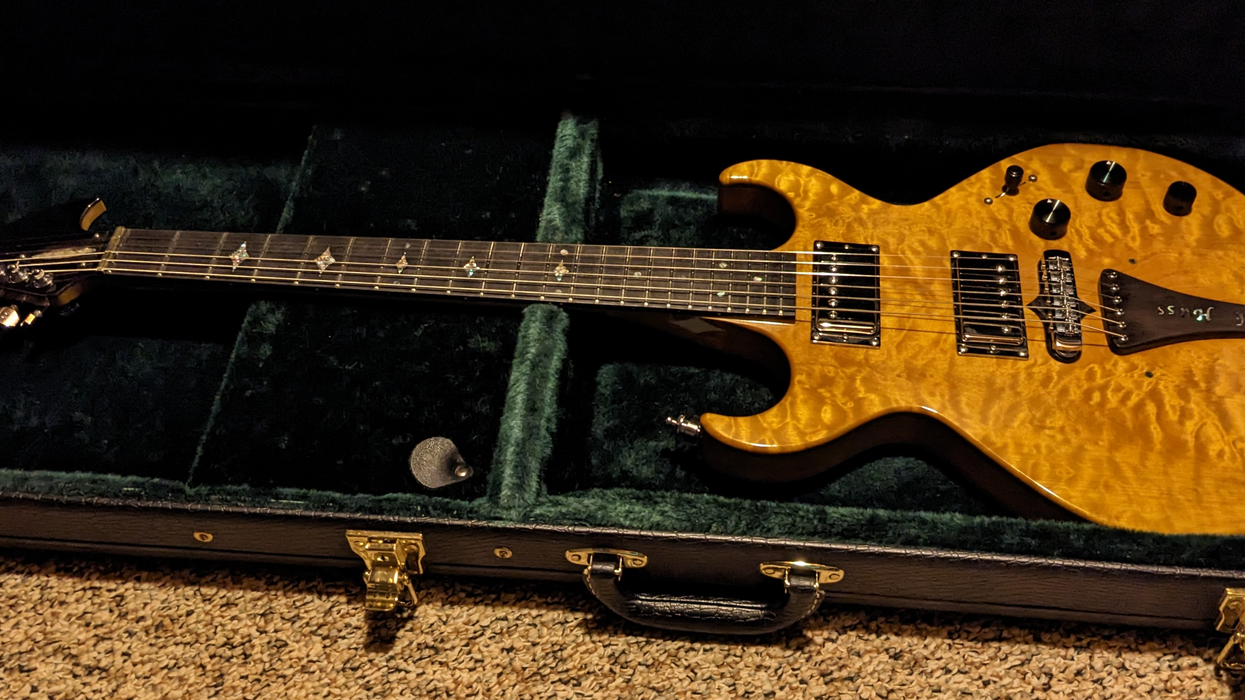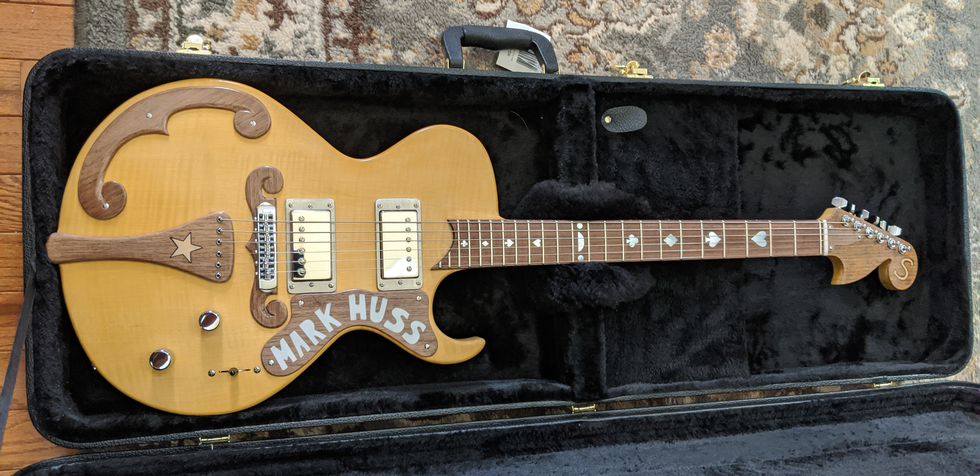With a yen for a pine-bodied 6-string with a diverse array of tones, Steve Bloom built a parts guitar that‘s more than the sum of its parts.
I'm a professional musician and have a guitar repair business called Harlem Fret Works here in Harlem, New York City. A client brought me two guitars to work on with pine bodies, and I was really impressed with the sound, so, of course, I wanted a guitar with that sound, too! I had never owned a guitar with P-90s. So, this guitar satisfies both of those things at the same time. It’s a Telecaster-style with a pine body and two Seymour Duncan Vintage Antiquity P-90 pickups.
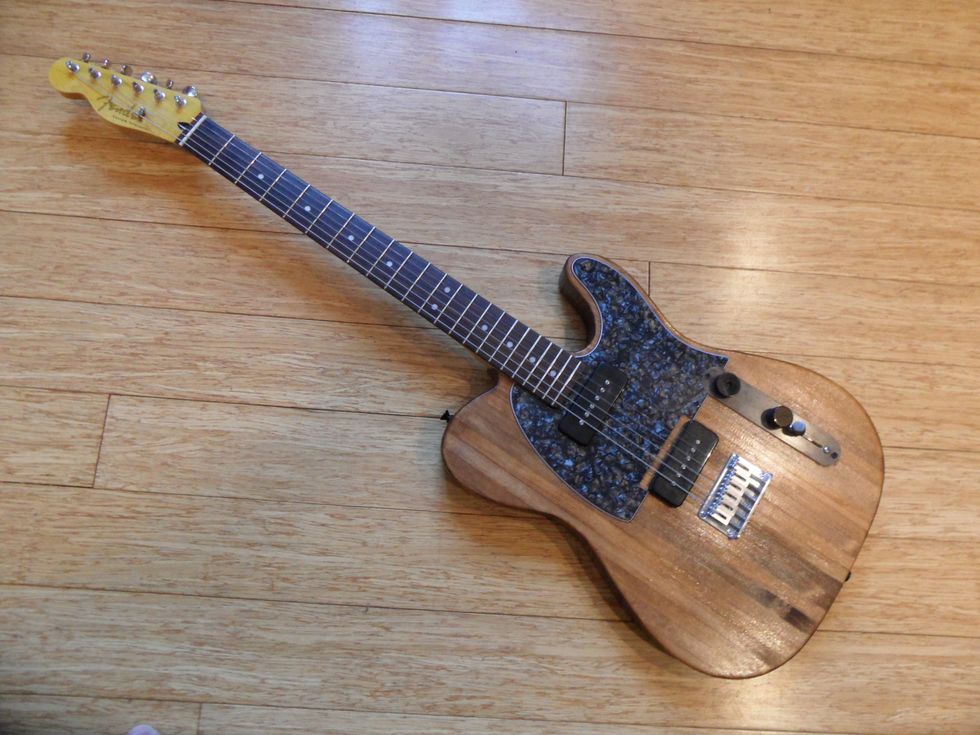
Behold the Pinecaster: Note the upside-down left-handed guitar neck.
Wiring: 4-way switch, with series/parallel, push-pull tone control for out-of-phase tones. Reverse control plate with a Jazzmaster roller knob on the volume control, for a low-profile knob that you won’t hit when playing. I use a different wiring scheme for the 4-way switch, instead of the standard one. I feel this wiring is more intuitive when you’re playing live. Thanks to Breja Toneworks for figuring this out!
Position 1: bridge
Position 2: neck/bridge parallel
Position 3: neck/bridge series
Position 4: neck only
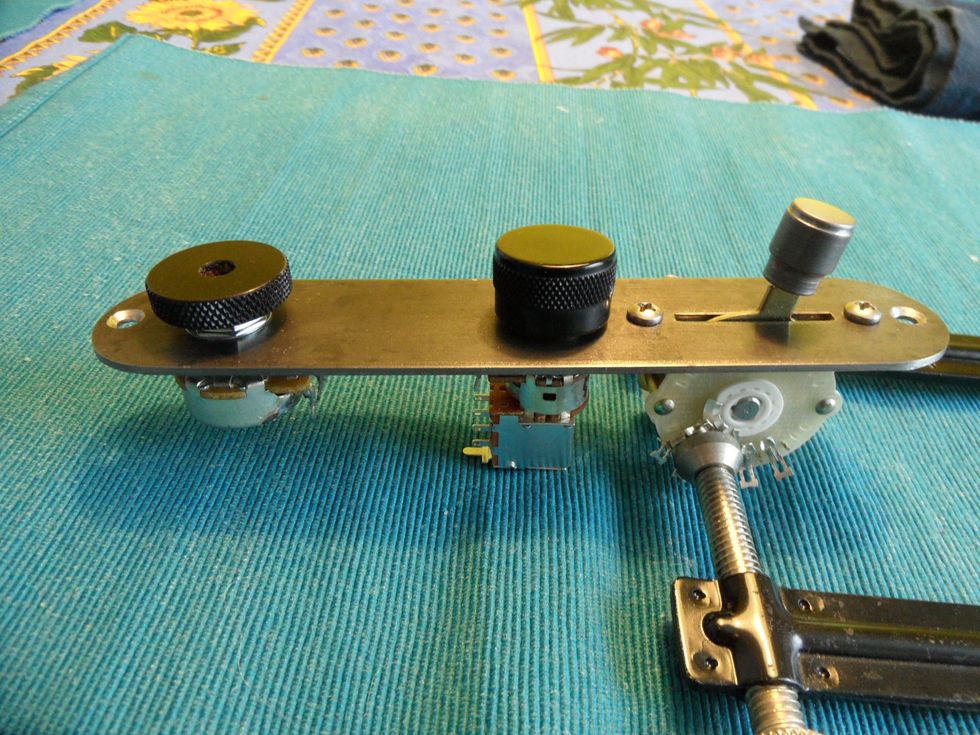
The volume dial on the Pinecaster’s reverse switch plate is a Jazzmaster roller knob.
I did a soldering trick to the neck P-90. I unsoldered the braided wire from the lug, shielded it, and added an extra ground wire to the lug. This was the only way to get the wiring capabilities listed above.
The neck is maple with a rosewood fretboard, and it's actually a Mighty Mite lefty that was given to me by one of my oldest friends. I had to put new side dots on the edge of the fretboard facing me. However, I do like the reverse headstock idea. I think it makes the high E string easier to bend. I needed to buy lefty Kluson-style tuners since I didn’t want to keep the Grovers that were on there. Just a bit too heavy. Luckily, the neck screw holes matched up perfectly. I sanded the neck heel just slightly to fit it to the neck pocket.
“That out-of-phase with the two P-90s is really cool—best funk tone out of a Tele I ever got!”
I bought the pine body on Etsy, and I did the finish: water-based stain from Wood Essence, with many coats of Birchwood Casey Tru-Oil over it. This is a great nontoxic finish that can be done at home. There are no toxic fumes like with nitrocellulose lacquer or polyurethane.
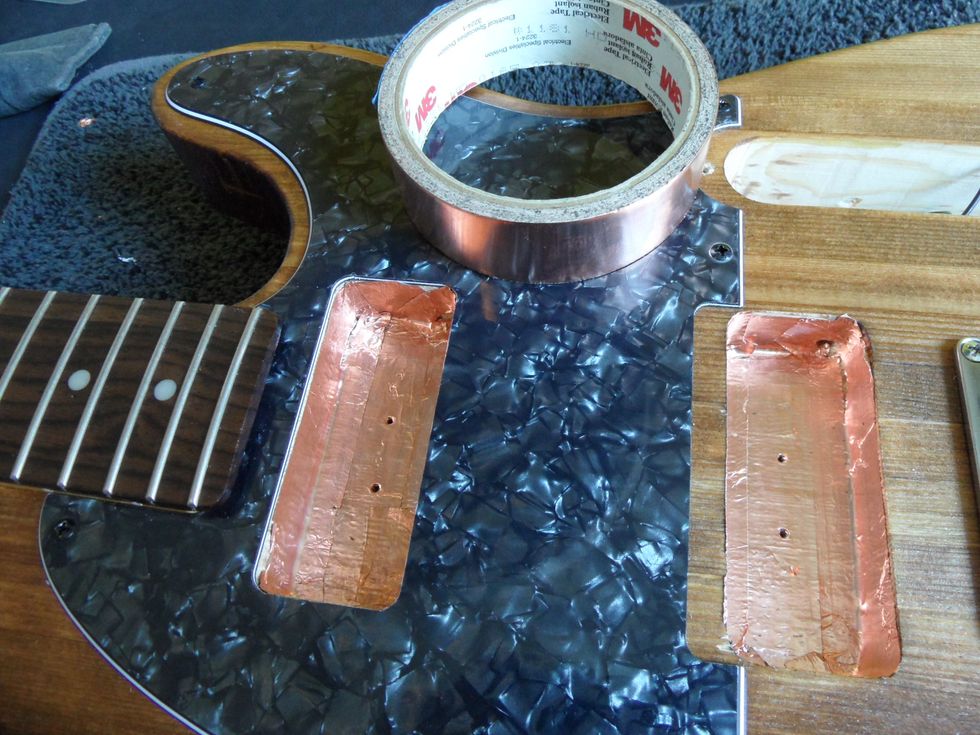
Steve added shielding to the cavities for the guitar’s two P-90s.
The sound? It was even better than I had hoped. Just amazing. That out-of-phase with the two P-90s is really cool—best funk tone out of a Tele I ever got! Also, the in-phase tones with these P-90s are wonderful. I have .011s with a wound G because I play many styles on gigs, and I like the chords to be in tune, and for some reason, .010s felt too slinky on this guitar. I really got lucky with this build; it came out great!



